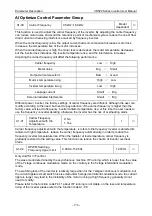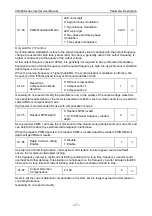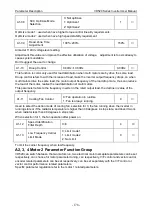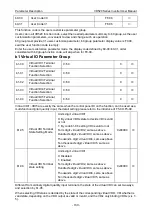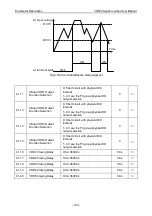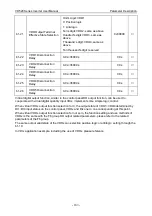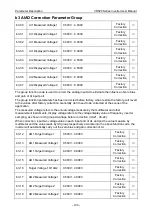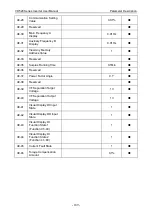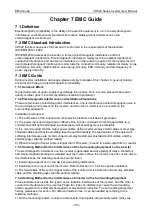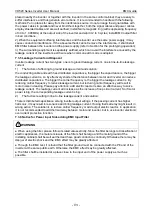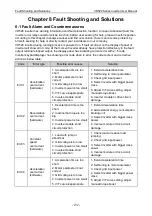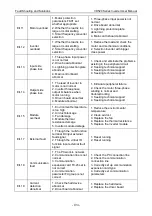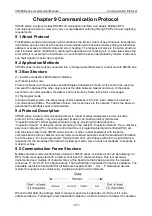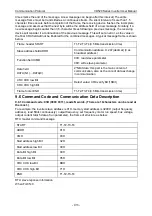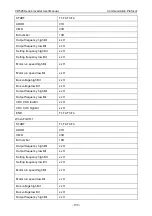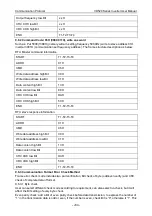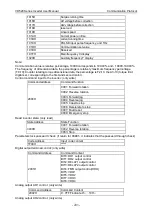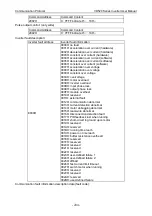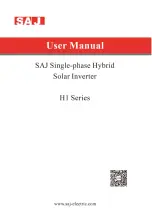
EMC Guide VD520 Series Inverter User Manual
- 190 -
Chapter 7 EMC Guide
7.1 Definition
Electromagnetic compatibility is the ability of the electric equipment to run in the electromagnetic
interference environment and implement its function stably without interferences on the
electromagnetic environment.
7.2 EMC Standard Introduction
VD520 inverters have pass CE Test and is conformed to the requirements of the standard
IEC/EN61800-3: 2004.
IEC/EN61800-3 assesses the inverter in terms of electromagnetic interference and Anti
electromagnetic interference. Electromagnetic interference mainly tests the radiation interference,
conduction interference and harmonics interference on the inverter (required for the inverter for civil
use)Anti-electromagnetic interference mainly tests the conduction immunity, radiation immunity, surge
interference immunity, rapid mutation pulse group immunity, ESD immunity and low frequency of
power supply immunity.
7.3 EMC Guide
During inverter installation and usage, please comply to details of this chapter, in general industry
environment it has good electromagnetic compatibility.
7.3.1 Harmonic Effect:
Higher harmonics of power supply may damage the inverter. Thus, at some places where power
quality is rather poor, it is recommended to install AC input reactor.
7.3.2 Electromagnetic Interference and Installation Precautions
There are two kinds of electromagnetic interferences, one is interference of electromagnetic noise in
the surrounding environment on the inverter, and the other is interference of inverter on the
surrounding equipment.
Installation precautions:
1) The earth wires of the inverter and other electric products shall be well grounded;
2) The power input and output power cables of the inverter and weak current signal cables (e.g.
control line) shall not be arranged in parallel and vertical arrangement is preferable.
3) It is recommended that the output power cables of the inverter employ shield cables or steel pipe
shielded cables and that the shielding layer be earthed reliably. The lead cables of the equipment
suffering interferences are recommended to employ twisted-pair shielded control cables, and the
shielding layer shall be earthed reliably.
4) When the length of motor cable is longer than 100 meters, it needs to install output filter or reactor.
7.3.3 Handling Method for the Interferences of the Surrounding Equipment on the Inverter
The electromagnetic interference on the inverter is generated because plenty of relays, contactors
and electromagnetic braking are installed near the inverter. When the inverter has error action due to
the interferences, the following measures can be taken:
1) Install surge suppressor on the devices generating interference;
2) Install filter at the input end of the inverter. Refer to Section 7.3.6 for the specific operations.
3) The lead cables of the control signal cable of the inverter and the detection line employ shielded
cable and the shielding layer shall be earthed reliably.
7.3.4 Handling Method for the Interferences of Inverter on the Surrounding Equipment
These interferences include two types: one is radiation interference of the inverter, and the other is
conduction interference of the inverter. These two types of interferences cause the surrounding
electric equipment to suffer electromagnetic or electrostatic induction. The surrounding equipment
hereby produces error action. For different interferences, it can be handled by referring to the
following methods:
1) For the measuring meters, receivers and sensors, their signals are generally weak. If they are

